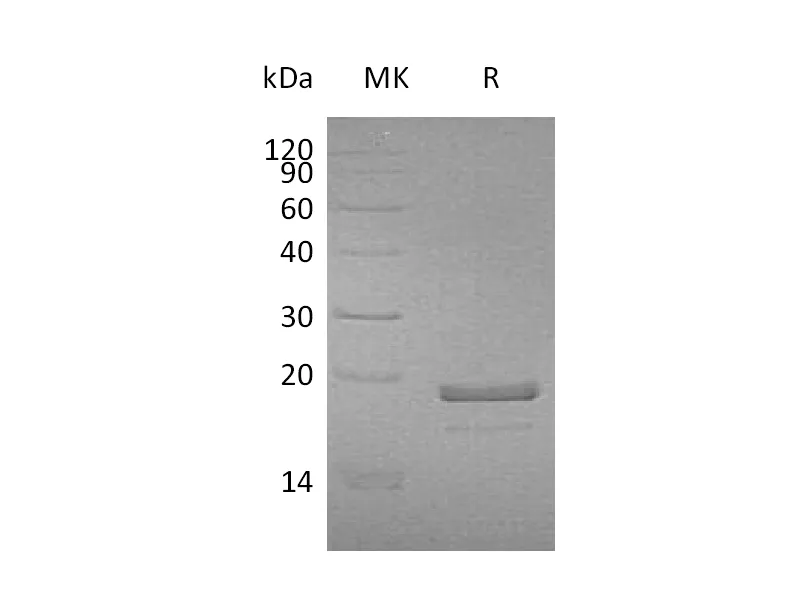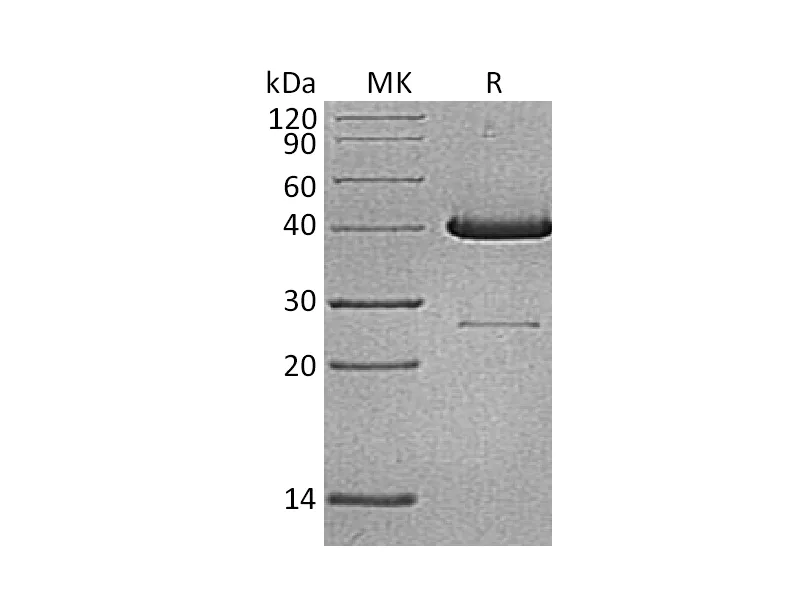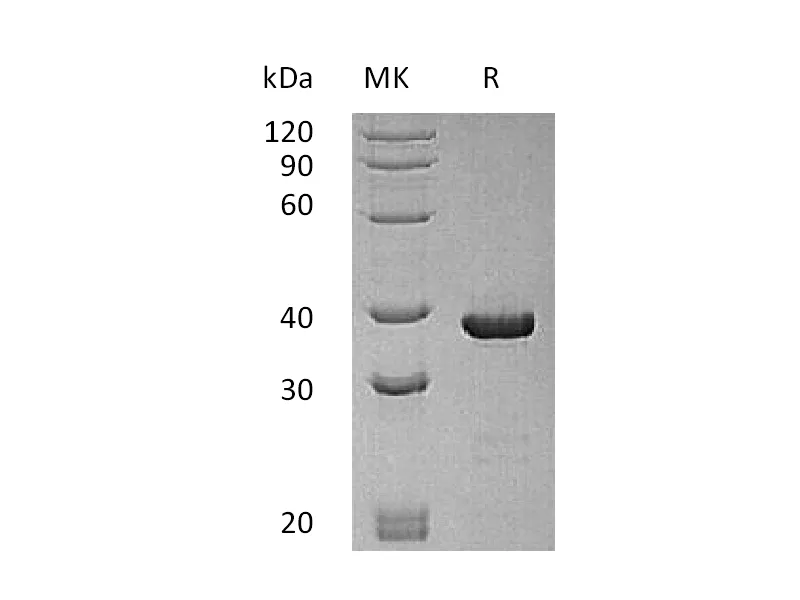| 产品名称 |
Recombinant Mouse CTLA-4 (C-6His) |
| 英文名称 |
CTLA-4/CD152/Cytotoxic T-lymphocyte Protein 4 |
| 纯度 |
Greater than 95% as determined by reducing SDS-PAGE |
| 内毒素 |
<1 EU/µg as determined by LAL test. |
| 蛋白构建 |
Recombinant Mouse Cytotoxic T-lymphocyte Protein 4 is produced by our Mammalian expression system and the target gene encoding Ala37-Asp161 is expressed with a 6His tag at the C-terminus. |
| Accession |
P09793 |
| 表达宿主 |
Human Cells |
| 种属 |
Mouse |
| 预测分子量 |
14.6 KDa |
| 制剂 |
Lyophilized from a 0.2 μm filtered solution of 20mM PB, 150mM NaCl, pH 7.4. |
| 运输方式 |
The product is shipped at ambient temperature.Upon receipt, store it immediately at the temperature listed below. |
| 稳定性&储存 |
Store at ≤-70°C, stable for 6 months after receipt.Store at ≤-70°C, stable for 3 months under sterile conditions after opening. Please minimize freeze-thaw cycles. |
| 复溶 |
Always centrifuge tubes before opening.Do not mix by vortex or pipetting.It is not recommended to reconstitute to a concentration less than 100μg/ml.Dissolve the lyophilized protein in distilled water.Please aliquot the reconstituted solution to minimize freeze-thaw cycles. |
| 分子别名 |
| Cytotoxic T-lymphocyte protein 4; Cytotoxic T-lymphocyte-associated antigen 4; CTLA-4; CD152; Ctla4 |
| 背景介绍 |
| Mouse Cytotoxic Tlymphocyte 4(CTLA-4,CD152), is a type I transmembrane T cell inhibitory molecule. mouse CTLA4 cDNA encodes 223 amino acids (aa) including a 35 aa signal sequence, a 126 aa extracellular domain (ECD) with one Ig-like V-type domain, a 21 aa transmembrane (TM) sequence, and a 41 aa cytoplasmic sequence. Within the ECD, Mouse CTLA-4 shares 68% aa sequence identity with human. CTLA4 is similar to the T cell costimulatory protein CD28 since both of the molecules bind to CD80 and CD86 on antigen-presenting cells. CTLA4 transmits an inhibitory signal to T cells, whereas CD28 transmits a stimulatory signal. Intracellular CTLA4 is also found inregulatory T cells and may play an important role in their functions. T cell activation through the T cell receptor and CD28 leads to increased expression of CTLA4. Genetic variations of CTLA4 have been associated with susceptibility to systemic lupus erythematosus(SLE), Gravesdisease(GRD), Celiac disease type3(CELIAC3) and Hepatitis B virus infection(HBVinfection). |
注意事项
本司产品仅用于科研,不用于临床诊断和治疗




